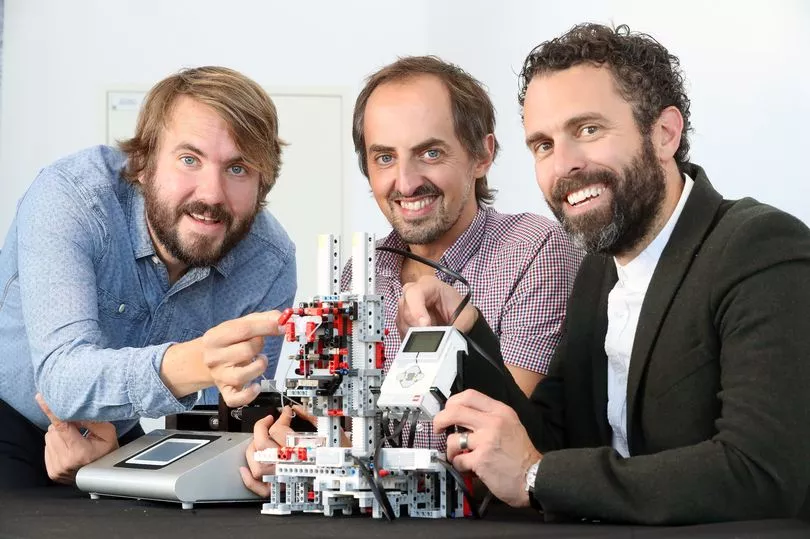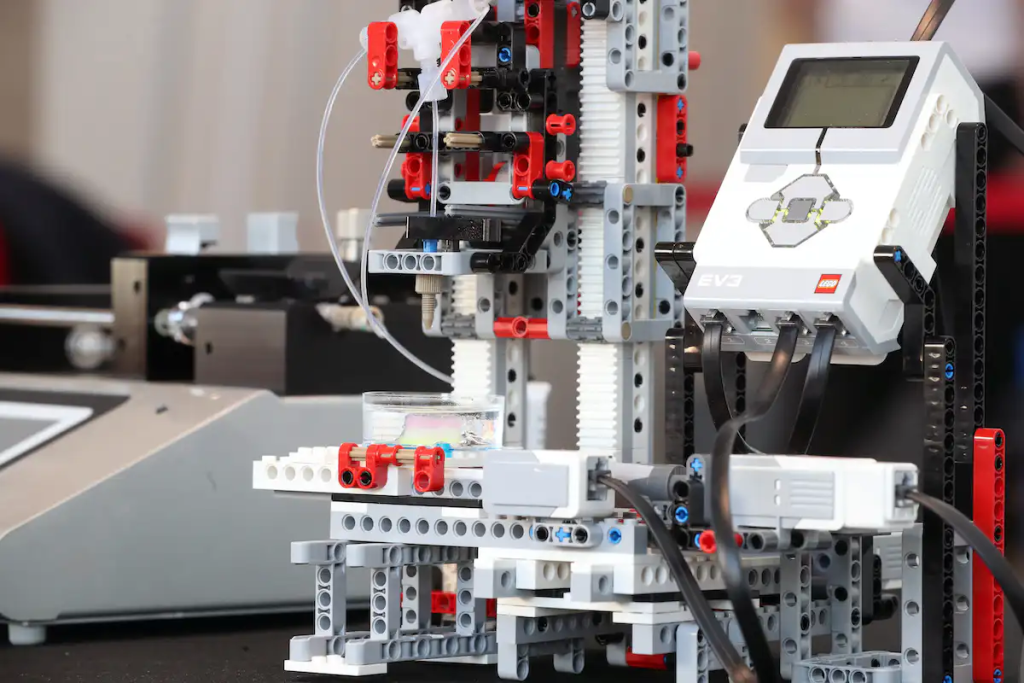Researchers from Cardiff University have developed a 3D bioprinter made entirely from Lego.
Led by Dr Christopher Thomas, Dr Oliver Castell and Dr Sion Coulman from Cardiff’s School of Pharmacy and Pharmaceutical Sciences, the project seeks to make 3D bioprinting more affordable and accessible.
Using bioink, the Lego bioprinter can precisely 3D print high-resolution layers of cells to replicate the structure of human tissue. Cardiff University are currently using the Lego bioprinter to 3D print layers of skin cells, working towards a full-scale skin model.
Beyond this, the Lego bioprinter can also be used to add diseased cells to healthy skin models. This allows scientists to assess how skin conditions develop, and how healthy and diseased cells interact. Simulating how skin diseases progress ultimately helps researchers develop potential treatments.
This project was primarily funded by the British Skin Foundation PhD studentship grant. “We are delighted to see that the funding from the British Skin Foundation has allowed for such fantastic results with this novel research. We are looking forward to seeing how the research will now be used to progress the future of biomedical research,” commented Matthew Patey, CEO of British Skin Foundation.
Accessible and affordable 3D bioprinting
Lego is affordable, and manufactured to high precision and tolerances. Using Lego allowed the team to produce the 3D bioprinter for just £500. This represents substantial cost savings compared to commercially available bioprinting units, which cost upwards of tens of thousands of pounds.
The team has released a free blueprint, outlining how to reconstruct the 3D bioprinter. It is hoped that more labs will use these instructions to make their own Lego bioprinter, expanding bioprinting capabilities to researcher’s who would otherwise not be able to afford such technology.
“At a time when research collaboration has never been more critical, and when research funding is so squeezed, we are proud to share an open source, accessible and affordable alternative to a much-needed piece of equipment that is beyond most researchers’ budgets,” explains Dr Thomas.
The team ultimately want their “Lego bioprinter to enable researchers to conduct groundbreaking research because that will ultimately lead to a better understanding of biology and further improve human health.”

Developing a functional Lego 3D bioprinter
A multidisciplinary team of engineers and biologists collaborated to design, engineer, construct, and program the bioprinter. The team used a combination of standard Lego bricks, parts from Lego’s mechanical sub-brand Lego Mindstorms, and a lab pump to construct the bioprinter.
Whilst Lego has already been used to build standard 3D printers, 3D bioprinters require especially high levels of precision, reliability, and stability to be of use in a lab setting. The Cardiff University team claim that their Lego 3D bioprinter, although still in its infancy, achieves the required level of precision to 3D print delicate biological material.
To achieve this, a nozzle firstly ejects a gel-like bioink, which is full of cells, onto a dish. A mini Lego Mindstorm computer controls the movements of the 3D printer. This device moves the dish along the X and Y-axis, while simultaneously moving the nozzle along the Z-axis during extrusion. These programmable movements formulate layers of cells to replicate the 3D structure of human tissue.

3D bioprinting for medical applications
Employing 3D bioprinting technology for medical applications is nothing new. Earlier this year, scientists at Swansea University announced that they were developing a 3D printed vegan nose for use in artificial nose transplants. Here, nanocellulose hydrogel and hyaluronic acid are used as bioink to 3D print an artificial cartilage scaffold. After curing, this scaffold is bathed in a solution of the patients’ cartilage cells, before being surgically implanted.
Elsewhere, 3D BioFibR, a Canadian tissue engineering company, recently launched two new collagen fiber products μCollaFibR and CollaFibR 3D scaffold for 3D bioprinting. These new products are said to offer significant advantages for tissue engineering and tissue culture applications. From a strength, diameter, and quality perspective, 3D BioFibR’s new products are said to be “best in class,” accurately recreating the natural appearance, structure, and function of collagen fibers.
Subscribe to the 3D Printing Industry newsletter to ensure you keep up with the latest 3D printing news. You can also follow us on Twitter, like our Facebook page, and subscribe to the 3D Printing Industry Youtube channel to access more exclusive content.
Are you interested in working in the additive manufacturing industry? Visit 3D Printing Jobs to view a selection of available roles and kickstart your career.
Featured image shows from Left to right: Dr Oliver Castell, Dr Chris Thomas, Dr Sion Coulman. Photo via Cardiff University.


